Holman sits down with Raptor Chief Engineer Carl Widmann for an in-depth interview, discussing the intricacies and innovations of the Raptor series. He also gets behind the wheel of the highly anticipated 2024 Ford Ranger Raptor, providing firsthand insights and driving impressions. The Truck Show Podcast is proudly presented by Nissan, in association with Banks Power.
The following transcription of The Truck Show Podcast was generated using a speech recognition software, and will contain errors. Please review the timestamp and listen to the corresponding audio for accuracy.
Quick Link to Previous Episodes
Sean P. Holman (0s):
Hey, Lighting Have, You Heard. Welcome
Recording (3s):
To Barnes and no
Jay “Lightning” Tilles (5s):
I have not.
Recording (7s):
The truck show. We’re gonna show you what we know. We’re gonna answer What The truck cars. Truck rides with The truck show. We have the lifted We have the lowered and everything in between. We’ll talk about trucks that run on diesel and the ones that run on gasoline. The truck show. The truck show. The truck show. Whoa Whoa. It’s The truck show with your hosts Lightning and Holman.
Sean P. Holman (44s):
This episode of The truck Show Podcast Have You Heard is proudly presented by Nissan with the Frontier Titan and Titan Xd. Nissan has a truck for every need, along with the legendary Nissan durability. Test Drive, your next truck at a local Nissan dealer today, Or point your browser to Nissan usa dot com where you can use the build and price tool to configure a Nissan truck that fits your lifestyle.
Jay “Lightning” Tilles (1m 4s):
And when you’re thinking about adding power or improving fuel economy, Banks has over 65 years of experience Whether. It’s cold air intakes or exhaust systems tuning, throttle control charge, air cooling, lubrication components, and much more. No one offers smarter, safer, 50 state emissions compliant performance parts than Gale Banks. You’ll find the best engineered parts for your truck at Banks Power dot com. Homan, you were somewhere doing something secretive?
Sean P. Holman (1m 31s):
No, not really. I went to Utah to drive the new Ford Ranger.
Jay “Lightning” Tilles (1m 37s):
Oh, that you went there and back in like 20 hours,
Sean P. Holman (1m 39s):
I think of 30 hours or something like that? Yeah. Whew. Ouch. Yeah, it was, it was a quick turnaround, but I had a chance to drive both the, the regular Ranger and the Ranger Raptor and so I got some seat time with the chief engineer for Ranger and so, so I’ve got some seat time with the chief engineer for the Raptor program, including Ranger. We’ve obviously had Juan de Pena on, I’m talking about the regular ranger. I’ll say this, the Ranger is incredibly nice. It drives so smooth, so nice. I was really impressed with the driving dynamics and we drove, it was snowing for part of our drive and raining for part of it. We’re on these twisty roads and super composed very little NVH. Great seating position.
Sean P. Holman (2m 19s):
Mirrors are giant. They’re almost too big. I’m like, what the heck? These mirrors are huge.
Jay “Lightning” Tilles (2m 23s):
Why do you think they made ’em so
Sean P. Holman (2m 24s):
Big? I, I have no idea. Maybe ’cause towing for towing and stuff. It, it has a decent tow rating and all that. And we’ve talked about all that in the previous program. But I will say I was super impressed. One thing I did like is the dash, the current ranger dash that cling on forehead thing is, is so old looking clinging on reference one. Yeah, it just ugh. And the new dash super modern looks great. And there’s a big screen, kinda like on your ramp T Rx in the middle. That is a vertical orientation. Right, so it’s portrait and not landscape. Yep. So what they’ve done is the center console’s not much wider than that screen. So they’ve carved a lot of space out to make the center console real narrow so that your knee isn’t banging up against the inside. There’s a lot of knee room for you, bigger guys out there and, ’cause it’s
Jay “Lightning” Tilles (3m 7s):
A narrower car. I mean it’s, again, it’s
Sean P. Holman (3m 9s):
Not a full size It’s truck. Yeah, it’s an mid size truck. Yeah. But it’s grown a little bit and it just was a really nice drive. We did not have a chance to drive the 2.7 liter V six. Those are coming later. We only drove the, the turbo fours, which are the 2.3. And I will say compared to the GMs, I was impressed even though we were at altitude in Salt Lake City, probably as high at, at times as 6,500 feet, something like that. Less turbo lag than the 2.7 in the GM trucks. So
Jay “Lightning” Tilles (3m 35s):
Some decent altitude compensation
Sean P. Holman (3m 36s):
And I feel like the transmission was a lot more responsive. The GMs kind of suffer from a little bit of turbo lag and a little bit of trans laziness, like where it’s not as crisp shifting where the Ford felt a little bit quicker and a little bit more responsive, plus the chassis and everything just felt great. It wasn’t hunting
Jay “Lightning” Tilles (3m 52s):
For gears
Sean P. Holman (3m 52s):
At all. No, the 10 speed was great. I I I thought it was great. The, the really, the only thing that I noticed that I did not like was the ESS, the electronic start stop. You could catch that four cylinder in a, in a certain moment where it would shutter. Like if you Oh really? Yeah. Where it would start up and if you’re at a stoplight, it was little slower, like half a sec. Not a lot, like half a second slower than I wanted it to be. If I didn’t wait for it to fully fire up and I got on it, it would just like shutter a little bit. It allows
Jay “Lightning” Tilles (4m 21s):
You to turn it off
Sean P. Holman (4m 21s):
Though, right? So yeah, you can turn that ESS off, but it You know you have to do it every single time. You restart the vehicle with the key, which, which sucks. The other thing I’ll say is the screen is really crisp. Sync four is really great. Again, the engine super torkey felt great again. Seat comfort was just okay for me. It was really hard for me to find. They look like they’re great and I just couldn’t find a comfortable position. No.
Jay “Lightning” Tilles (4m 41s):
Nissan Frontier is what you’re
Sean P. Holman (4m 42s):
Saying. It’s not as good as the zero gravity seats. And I thought the shifter was kind of dumb. I it was one of those shift. Well, no, I mean dumb just the way mean mean the way it’s shaped and the way you have to use it. You can’t just get in and use it. It’s like one of those ones that’s like a computer shifter. It moves mechanically but
Jay “Lightning” Tilles (4m 58s):
Like, like the new Tahoe
Sean P. Holman (4m 59s):
And Yeah, it’s like that. So you, well the Tahoe’s a push button. This isn’t a push button. This is a actual shifter on the console. It’s not like your traditional shifter where you push a button, pull it into gear, it’s push a button for park, pull it back for drive. But you have to have it depressed. Manual mode is on the side of it. It just wasn’t ideal. I didn’t, I didn’t, I didn’t love the shifter. That being said, interior is really nice, really roomy. The backs of the seats are carved out. Rear seat room was great and love, love the new Raptor. For those of You know, I built a long travel ranger back in the early two thousands, which was like a ranger raptor before that ever was a thing. The new ranger Raptor is awesome.
Sean P. Holman (5m 39s):
I wish I had a little bit more travel. It has about 10 front and rear so it’s, it is balanced. We’ll get into that in a minute and I wish I had a little bit bigger tire. 35 would be perfect. It rolls on 30 threes wasn’t a liability at all on the trails we were on, but for me man, A 35, especially when You can get the Colorado AAV edition. Well
Jay “Lightning” Tilles (5m 57s):
How does a 33 look? Does it look undersized?
Sean P. Holman (5m 60s):
No, it’s fine.
Jay “Lightning” Tilles (6m 1s):
It’s fine. Well you saying nah don don’t like your the squint, like it’s fine.
Sean P. Holman (6m 4s):
Yeah, yeah, it’s fine. I wish it had, for me personally, I like a little bit more tire because where I go out in the desert, I will take all the ground clearance that I can get. So, so I was able to grab Carl Widman, who’s the Ford Performance chief engineer. He oversees the Raptor programs and we had a chance to sit in a brand new Ford Ranger Raptor and talk about the product. Alright, so I’m out in beautiful Utah and I’m sitting in the hotly anticipated ranger raptor and I finally had a chance to drive it today we just got off a course, we did a, a simulated baja course, we did a handling course, we did a jump and we did a kind of a mountain off road, more of a overland sort of a thing. And sitting with me is Carl Whitman, who has a lot of words in his title, which means he’s a really important guy.
Sean P. Holman (6m 50s):
You guys have heard him on the show before talking about the Raptor R for the F-150 and since he’s all things Raptor I think. Was it chief engineer? Is that Yep, yep, yep. All right. So, so this is the guy who touches everything. Raptor knows everything. Raptor and Carl, you may not know this, but back in the early two thousands I had a 2002 Ranger FX four. Okay. Before they called it the level two. So before you guys bastardized the name on it and I turned it into a long travel pre-runner. It had a Dixon Brothers racing. Okay. 14 inches of travel in the front, 17 in the rear Bill Stein, 81 hundreds at all four corners super charger. So it was a four liter with Explorer express blower and the stick.
Sean P. Holman (7m 32s):
There
Carl Widman (7m 33s):
You go.
Sean P. Holman (7m 33s):
So I, I am and I’ve had a bunch of rangers, you may know the history of me with Raptor and Levine with Raptor and our, our previous, well his previous life, my current life with the big truck and kind of the, the, the fun headaches we may have caused back when the original one came out. So Raptor is near and dear to my heart Ranger is near and dear to my heart. And now you finally brought over the second generation Ranger Raptor to the United States. I wanna hear all about it.
Carl Widman (8m 1s):
Yeah, no long time coming. It’s like two Christmases rolled together to get Ranger Raptor into production for North America. It’s always been something that we knew was gonna come. It was third in line. We finished off the Bronco Raptor. It was going on at the same time as Ranger Raptor globally was finishing off. So that’s why you’ll see a lot of similarities in the setups, right? We use the same over 400 horsepower, three liter in both products. We actually were doing a development here in the States on all the engine work and we were running Ranger raptors through Glams at the same time we were running Bronco Raptors to make sure the cooling systems were robust for You know three nine degrees c ambient stuff.
Carl Widman (8m 52s):
You’re the only ones out there in August in the middle of the desert Yeah. Doing that. So it, it’s, we always were kind of knew it was coming. We knew we had to launch out of the global plant first and then bring it into Michigan assembly second. And so we’re finally, finally got that done. It is everything. It can be a tremendous amount of power, a nice tight package as you drove it in into the woods. It’s just, it gives you another track you can take, you can choose your line along.
Sean P. Holman (9m 21s):
For example, if you get into a a Bronco Raptor or a full-size raptor, you may be in the ruts of the vehicle ahead of you. With the Ranger Raptor being a little bit narrower, you kind of drift outside of the ruts or go on either side of it and still be within the trail, which is nice. And I just wanted to, for people are asking when the original range of Raptor was announced, it was a global vehicle on what the T five platform, T six. T six. And everybody wanted that to come to the United States, but it was never federalized. The, there’s enough changes to the, I guess the front structure and some other things to bring that truck over here that it wasn’t gonna be easy at that point in the life cycle to make that a reality. So now the new platform comes out and you guys had us market in mind from the beginning.
Sean P. Holman (10m 5s):
Yep. So it was a lot easier to incorporate it and some people may ask, well why Bronco Raptor and why Ranger Raptor if they’re on the same chassis and why 33 inch tires when the Bronco Raptor gets 30 sevens? And I think I’ll, I’ll kind of throw what my thoughts are and then you can kind of put color on it or tell me if I’m wrong, but Bronco Raptors really like the purest expression of what a raptor can be in the sense that it’s basically a street legal ultra four card sort of made to go do incredibly stupid amazing things that a vehicle with a warranty shouldn’t do. Whereas the Ranger Raptor is more about the, it, it feels like more of a long distance race car. It’s, it’s it’s sporty, it’s fun, it’s got enough payload for overlanding and loading up the bed, things like that.
Sean P. Holman (10m 49s):
It doesn’t really need the 30 sevens, although I will say with like 30 fives. But it works incredibly well on the 30 threes and they’re just really two different products for, do two different people. One is probably gonna be more of a toy for somebody and one is going to be a, a primary daily driver that’s grable.
Carl Widman (11m 4s):
Yeah, absolutely. As we do all the raptors, each one of ’em, we kind of, as we try to explain what we’re doing, we kind of treat ’em as superpowers. Right. And so you, you end up with the F-150 Raptor is the, the North Star You know three generations all have run Baha all completed, all drove home, right? Bronco Raptor, like you said is ultra four and it was, it was a drop the mic kind of thing. We didn’t leave anything on the table on that truck. All its axle systems are set up to basically take its weight and haul it up on one tire and pull itself over and go over the next, so its three liter is able to send all that torque to one tire.
Carl Widman (11m 47s):
And in a rock crawling world, we knew the 45 degree approach angle and a big tire was gonna be critical. And When you developed the big tire. We needed to be able to take the axles and half shafts to take the big tire. So once you did that, you figured no one would want to order anything But that one. So the Bronco Raptor ended up being, like you said, that pure embodiment of a vehicle that really you gotta take the Johnson Valley to do what it’s designed to do. There’s not many locations on earth that You know really test that vehicle to drive highway speeds in the desert and then just crawl over boulders and like you said, what what’s the sweet spot? And it’s a new customer really. I think that’s able to get into a Ranger Raptor is it is the go anywhere vehicle.
Carl Widman (12m 31s):
It’s got all the technology of the chassis systems technology we do with live valve. So it’s the same controller that we use on all three of ’em. And then for this application, what’s really critical for us, we knew that the, from what Australia was doing, what we were doing, we knew it was gonna be pinned. We wanted to pin that one as a sporty truck. Everything went into guaranteeing that. And then we were also very, very focused on durability. They run an L Springs for a thousand miles, which is similar to our course. They run tabletops.
Sean P. Holman (13m 1s):
Yeah, we had Brad on the show. Yeah. And talked about his experience racing and winning in basically a, a stock raptor. Yep.
Carl Widman (13m 9s):
When You lay it out, we really want to get 10 inches of travel out of it to really have the shock, the ability to work and get three positions into the damper. Right. So we really needed to get
Sean P. Holman (13m 18s):
You’re talking about bypass zones
Carl Widman (13m 19s):
Essentially. Bypass zones, exactly right. So you get a mechanical bypass zone plus with live valve you actually get the boost valve. So what was super critical is at least having three zones. So when You can ride it on the highway, you get that that beautiful ride capability that you can get out of a big damper for a truck that doesn’t have a lot on prong mass. Yep. And that was super critical for us. And then it’s got a good approach triangle around three, three degrees because with the platform change that it went through, they pulled the front tire forward. So it’s got a better approach angle than an F-150 raptor and it really works well with The truck. So there’s really no need to upsize to get a approach angle out of it. So we’re able to keep a 33 on it and still have good running current.
Carl Widman (13m 59s):
It’s like 10 and a half, 10.7 inches of running clearance and we’re able to still get that travel so we can dissipate the energy and the shock, which is the best place to dissipate the energy. ’cause it’s gonna really get it out in heat. Right. In essence,
Sean P. Holman (14m 13s):
Rather than jarring the chassis or setting that, that g load or shock load into either the drive train or the occupants.
Carl Widman (14m 20s):
Yep. You got it. And and then really that’s about our driver focus world. And for performance we really want to have you, you’ve got gobs of power, right? So now you got as much power as you can throw down right At 400, 2 5 horsepower. Right? And then you can position the Wheel, you still got You know this looks like a Wheel out of a raptor. Right. They’re all the same. And then you can spend the time positioning the vehicle You know the chassis can really take care of all the bumps, all the, all the whoops. And really dissipate it with that, that damper that’s electrically controlled, it knows what you’re doing it all
Sean P. Holman (14m 53s):
The time. And also the new live valves are rebound and compression where before they were compression only. Right.
Carl Widman (14m 57s):
These are still compression only cells.
Sean P. Holman (14m 59s):
These are are compression on the wrap. Yep. Okay.
Carl Widman (15m 1s):
Yep. All three of ’em are compression only. We’ll introduce the, on the 24 model year F-150. We’ll introduce that shortly.
Sean P. Holman (15m 9s):
I knew it was coming. I wasn’t sure where that, that crossover
Carl Widman (15m 11s):
Was. These are all set up with the live valve technology the same. Okay.
Sean P. Holman (15m 14s):
So live valve on compression and three bypass zones and
Carl Widman (15m 17s):
Shocks. Yep.
Sean P. Holman (15m 18s):
And and what’s the travel front versus rear?
Carl Widman (15m 21s):
It’s about 10 inches. Both on both. So, so it’s a, it feels really
Sean P. Holman (15m 24s):
Balanced out there. Yeah,
Carl Widman (15m 25s):
It, it is. It works really well for it. And it’s about an inch and a half over the base ranger. So it’s unique front shock towers like we always do with the raptors, You know shocks, springs, you name it. Arms, right. Watts, Lincoln, arre. So all, all the chassis stuff, if you roll the frame out of all three of ’em, they all be, are basically changing their own their own systems to really
Sean P. Holman (15m 47s):
Well let’s talk about that Watts versus pan hard on the Bronco regular ranger leaf springs in the back. Yeah.
Carl Widman (15m 54s):
All leaf
Sean P. Holman (15m 54s):
Ranger Raptor goes to coils in the back right? With a, with a watts or
Carl Widman (15m 58s):
Is this Yeah, coils in. Yeah. Yeah. Watts. So it goes from a, a leaf ranger is Yeah. Is the base, then it goes to a watts with coil overs.
Sean P. Holman (16m 6s):
What’s the advantage of a watts versus the setup on like the Bronco rear?
Carl Widman (16m 9s):
Yeah, so the Bronco rear little bit better for articulation on the axle for rock crawling. ’cause we can base, we have a, a larger travel, it’s like 13 and a half in the rear. So we twist the axle more on that. A watts better for steering, better steering control, better lateral control, the tire patch. So it works in this application. And then on the other application it’s rock crawling. You really want to get something that can twist a little bit more. Yeah,
Sean P. Holman (16m 33s):
I, I was amazed. I think that my takeaways are having driven some of the competition’s trucks. The turbo’s not laggy. It feels like there’s plenty of torque. The 10 speed transmission is very responsive. Just the sporty feel of the chassis. It’s, it’s dynamically, it’s very, very responsive. Especially for having a true alter tire. Now you guys went to BFGs km or K oh threes, which everybody wants ’em and they’re not out yet aftermarket. You gotta wait till spring or summer. But if you want ’em now you gotta go buy a ranger raptor when they’re available. But with a true all-terrain, even driving on the pavement for the short amount we did out here, it was raining, then it snowed and then it melted. And this is like, if you guys are familiar with like desert where you get hard pack that gets greasy on top.
Sean P. Holman (17m 18s):
That’s how all these tracks were. And we are, we were going at You know 30, 40, 45 miles sideways through all these turns and the, it was absolutely a ride. I was actually, everybody was kinda worried this morning. Oh it’s gonna be real slick out there. Real greasy. I was actually excited because it, one of the things with the newer vehicles that have like an electro hydraulic steering system is sometimes you can go faster than the steering can keep up. Well we’re seesawing that thing going around corners, setting up the chassis, getting into position to power out of the apexes and things like that. And the steering was linear the entire time. Yep. It was amazing.
Carl Widman (17m 55s):
Yeah. A lot of times spent on, on tuning the shock systems, the brake systems, the steering systems will work together. Both between my teams in North America working with the teams in Australia, they’re all You know they’re all symbiotic, right? They, and they talk through the, the idiosyncrasies of how you do the, the vowel stacks and the shocks. You can get both sides working for you. And then because you, it’s all doing it every millisecond you can compensate as you go. We got ride height sensors on each corner. So not only do you get the, the mechanical advantage of having bleeds as you roll, but you actually can clamp down on it. And then the rebound control in this truck has a lot of rebound control to give it that sporty feel.
Sean P. Holman (18m 38s):
Yeah. And I, I’ve said this on the show a gazillion times. One of my biggest beasts with every truck manufacturer out there is nobody has enough rebound control. And I don’t know if suspension engineers set that up because they’re thinking of payload is gonna calm it down. But for people in stock trucks who go out and they push the limits and they’re doing a You know seven tenths, eight tenths, nine-tenths, especially in the older all all bring up the TRD pro Tacoma last generation was notorious for not having enough up travel and way too little rebound to where you would hop in the back or pogo and you’d be fa facing down with the rear end two feet off the ground, steering with the front tires looking at the dirt. And there’s so many factory vehicles that don’t have enough rebound.
Sean P. Holman (19m 20s):
You saying that you guys put a lot of rebound into this is, is bigger than I think what people think. ’cause the experience driving in this type of terrain rebounds every bit as important as compression. I think people forget about that.
Carl Widman (19m 32s):
Yeah, absolutely. And I think it has to do with the way it got tuned up as, as you, as you’re going through, you want it durable for off-road and then giving it character and a lot of the character we can electrically control jounce and have a lot of capability. A lot of, we call it authority for damping and then tuning it with a lot of rebound control or more than we’d use on a rock crawling vehicle. Right. Gave it that ability to give it a character of its own that really matches its size. And, and You know I think it’s gonna do well in the market as it’s has its character that fits as you walk up to it and it’s, it’s a surprising comfortable vehicle to drive on the road.
Sean P. Holman (20m 12s):
Oh it’s, it’s great, it’s super comfortable. It’s fun to drive even on twisty stuff. I mean it’s just the, the whole package is something that’s super livable daily. It’s got a little bit more power than the Bronco Tune does on it. And I think it’s a little bit lighter than the Bronco two plus you have 30 threes so it scoots, I mean yeah, it, it’s, it’s really responsive on the throttle. You’re not waiting for the turbos to come and boil. And we’re up here in Salt Lake City, so we’re at several thousand feet of elevation and it’s still that responsive. I live at the beach so I can’t imagine like just how much more fun it would be able to drive at zero to zero feet of You know sea level.
Carl Widman (20m 44s):
It’s a motor that might be a little bit oversized for this one, but Right. No such thing. No such thing. Right. But it You know it’s the, the most powerful mid-size pickup around. Right. And so it, it fits the bill and, and You know you can do all sorts of good fun stuff with it. Definitely. And
Sean P. Holman (21m 1s):
It still has what, 1,550 or something like that? Pounds of payload. Yeah. So it’s, it’s not maxed out on payload by any means. And you can also tow 5,700 pound trailer something like 57 50.
Carl Widman (21m 12s):
It’s like 50 something like that. 5,000 something. Yeah. And so it’s a little bit less than the base ranger. Yeah. But the base ranger
Sean P. Holman (21m 17s):
But, that’s still more than enough trailer. Yeah.
Carl Widman (21m 19s):
For, for what people usually tow with. You can get a couple jet skis behind it. A kayak trailer, small popup. Right. It depends on what you want to do as your adventure. Right. And then all the guys from Australia will always joke, they’ll take ’em to the beach ’cause You know that’s that’s what you do with ’em, right? Yeah.
Sean P. Holman (21m 36s):
Well we’re sitting here in one, you can hear how quiet it is. The, these are incredibly quiet. But in front of us is a full sized F-150 Raptor and the new Ranger Raptor, the raptor, it looks visually big until you see one next to the, the full size. But it looks really muscular and purposeful. But from a, again, somebody who lives in an apartment complex has a garage that urban livability to have a truck that to be able to do all these things and then still go out and have a a pretty epic adventure, it, it really feels like this is really the right time. I mean, Rangers we know was out of the market in America for a long time until you guys brought it back and it feels like it’s, it’s so ripe for this type of vehicle in the marketplace right now.
Carl Widman (22m 19s):
Like I said, it’s like having two Christmases and one to get it back into, into the US market. That’s been a very successful global vehicle for us. And You know, I think it’ll do very well in the market and create another group of people who joined the Raptor family. So
Sean P. Holman (22m 35s):
What’s the next Raptor vehicle we should look out for? Well,
Carl Widman (22m 38s):
I’ll put it up to your listeners for what the, what they think they want us to work on next. Alright. I think everybody’s got an opinion on where they wanna do the next one. I’d always like to hear what people are thinking on it. Alright.
Sean P. Holman (22m 50s):
I know we, we’ve talked and we’ve seen on our socials and stuff, there’s a few oddball ones out there like Maverick, which I don’t know that you could take a unibody and really do the types of things out here. So maybe a maverick tremor would be, would be good enough. ’cause that has turned out to be a vehicle that honestly I wanted to hate and I, I can’t, it’s just, it does what it does really well.
Carl Widman (23m 9s):
Yeah. No, I, one of the guys has one of ’em in the shop, so Yeah, no, it, it’s got a look to it and does what it needs to do.
Sean P. Holman (23m 15s):
Right on. Alright, well appreciate your time. Thanks for explaining the, the new Ranger Raptor. I’m super excited ’cause this has been a product that I’ve been waiting for. Oh, don don’t know, like 20 years for Ford to finally bring, bring out and it Looks like we got a few more hours this afternoon. So I’m done with this interview. I’m gonna go drive.
Carl Widman (23m 35s):
Okay, thanks John.
Jay “Lightning” Tilles (23m 37s):
Did you get into any precarious situations while driving
Sean P. Holman (23m 40s):
And driving? I did. No, I didn’t get anything precarious. No, I was You know. Listen, Ford is one of those companies that lets you push it, but to a very specific limit. So like we were able to jump raptors, which was awesome, but it was done very controlled circumstances with Hans devices and helmets and all the safety and basically saying, do this at this exact mile per hour and do
Jay “Lightning” Tilles (24m 5s):
This. But you were driving in raining snow. Yeah,
Sean P. Holman (24m 6s):
No, it was awesome. We were got all outta shape. So there is drone footage an in-car camera of me driving the soy muddy, like mud handling course that they put out. And I was driving sideways around a corner and the drone came at me and passed over my left shoulder, like over the bed, like missed me my feet. I can’t wait to see what the camera footage is ’cause hopefully I’m sideways like throwing up mud as that thing flies by me. Will they
Jay “Lightning” Tilles (24m 33s):
Give us the footage?
Sean P. Holman (24m 33s):
Yeah, they’re, they’re sending all the journalists. That was one of the things Ford did was they had a drone crew and in-car camera and each driver got their own USB drive. So they’re gonna edit it up and send it out. So I’ll I’ll post that on our socials when I get it. But it was one of those things that was like, I’m like in the mud, I’m You know onto the gas. I’m opposite th locked throttle the, and there’s a drone coming at me like, whoa. So I don know what the look on my face looks like. I probably have my tongue out the whole time or something like that. But my driving partner was a, a really cool guy named Jan. So a lot of you guys probably follow him on Instagram, 3 95 North, give him a follow. He’s got some photos of us up on his page and great experience, love driving it. And yeah, can’t wait to get some more sea time in it.
Jay “Lightning” Tilles (25m 13s):
The truck Show Podcast is a production of truck famous LLC. This podcast was created by Sean Holman and Jay Tillis with production elements by DJ Omar Khan. If you like what you’ve heard, please open your Apple podcast or Spotify app and give us a five star rating. And if you’re a fan, there’s no better way to show your support than by patronizing our sponsors. Some vehicles may have been harmed during the making of this podcast.




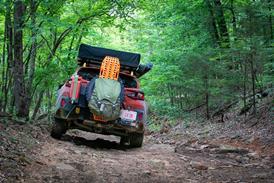
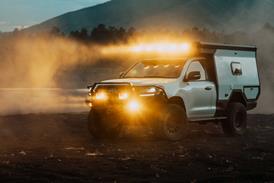
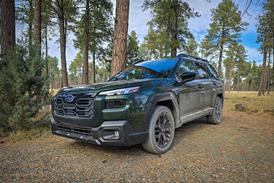
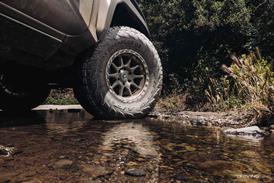
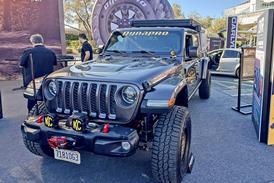
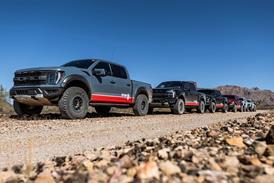
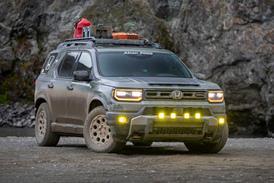
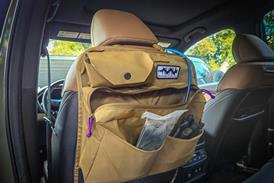
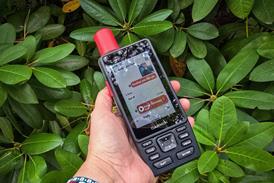
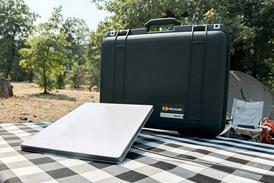
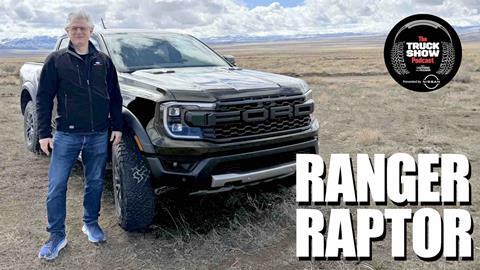






No comments yet